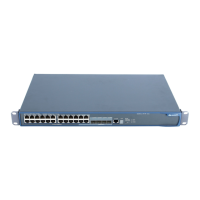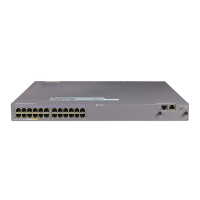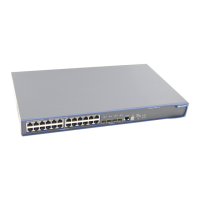Operation Manual – Multicast Protocol
Quidway S5600 Series Ethernet Switches-Release 1510 Chapter 7 PIM Configuration
Huawei Technologies Proprietary
7-5
In order that the receiver can receive the multicast data streams of the specific IGMP
group, PIM-SM adopts rendezvous points (RP) to forward multicast information to all
PIM-SM routers with receivers. RP is adopted in multicast forwarding. As a result, the
network bandwidth that the data packets and control packets occupy is reduced, and
the processing overhead of the router is also reduced.
In the receiving end, the router connected to the information receiver sends join
messages to the RP corresponding to the multicast group. The join message reaches
the root (namely, RP) after passing each router. The passed paths become the
branches of the rendezvous point tree (RPT).
If the sending end wants to send data to a multicast group, the first hop router will send
registration information to RP. When the registration information reaches RP, the
source tree establishing is triggered. Then the multicast source sends the data to RP.
When the data reaches RP, the multicast packets are replicated and sent to the receiver.
Replication happens only in the branch of RPT. The procedure is repeated
automatically until the multicast packets reach the receiver.
PIM-SM is independent of the special unicast routing protocol. Instead, it performs RPF
check based on the existing unicast routing table.
7.1.4 Work Mechanism of PIM-SM
The working procedure of PIM-SM is:
z Neighbor discovery
z DR election
z RP discovery
z RPT shared tree building
z Multicast source registration
z Switching RPT to SPT
I. Neighbor discovery
The neighbor discovery mechanism is the same as described in PIM-DM. It is also
implemented through Hello messages sent between each router.
II. DR election
With the help of Hello messages, DR can be elected for the shared network, such as
Ethernet. DR will be the unique multicast information forwarder in the network. In either
the network connected to the multicast source S or the network connected to the
receiver, DR must be elected only if the network is a shared network. The DR in the
receiving end sends Join messages to RP and the DR in the multicast source side
sends Register messages to RP, as shown in
Figure 7-3:

